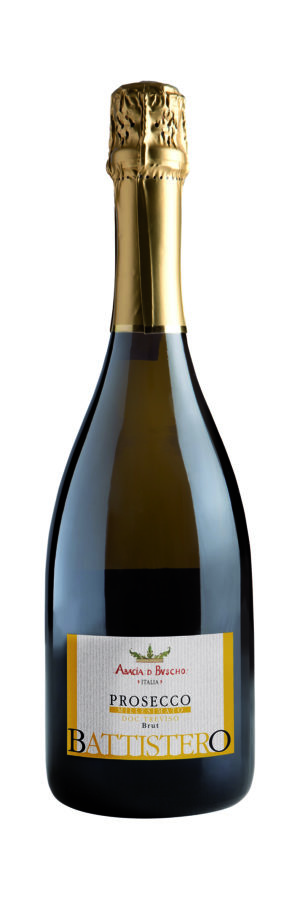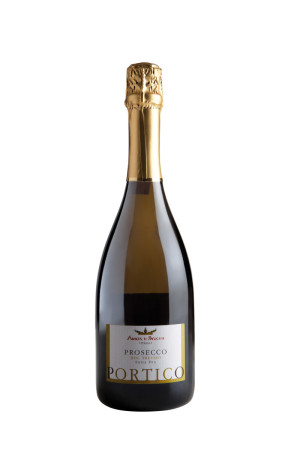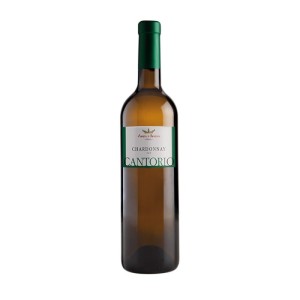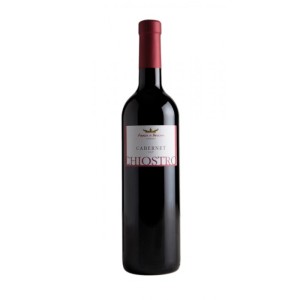- About us
- Company details
WINE BETWEEN TRADITION AND PASSION
Even in our choice of name our company acknowledges its origins in the ancient Benedictine Abbey of St. Andrew in Busco which once stood in this area and of which today only a small part remains. In fact, our passion for wine and our experience in producing it derive from the Benedictine attitude to the working of the land and wine-making. The family today
Today the company is directed by Giangiacomo Gallarati Scotti Bonaldi, who manages it following the family tradition, after a long and attentive period working alongside the previous generation. Giangiacomo, along with the rest of the family, is motivated by an immense passion for nature and desire to ensure the continuation of the long history of the Zenos, a family which has always managed this activity through innovative and, at times, courageous choices while respecting at all times tradition and the territory. Prosecco, a wine which has its origins in north-east Italy and is produced using an indigenous grape, is without doubt the crowning glory of Abbazia di Busco. All wines are produced using the company’s own vines under the patient and continued supervision of the family which passionately follows all the various processes involved.
Year of establishment:
2004
Number of employees:
FROM 3 TO 9 EMPLOYEES
Annual turnover:
between 0.5 and 2.5 million Euro
Reference year of turnover:
2019
Export turnover:
0
Activities:
Growing of cereals, other than rice, leguminous crops and oil seeds
Growing of roots, including sugar beet
Growing of perennial crops
Growing of grapes
Manufacture of tobacco products
- Videos
- Catalogue
No videos uploaded
No documents uploaded
- Contact Information
- Business Proposals
Company:
SOCIETÀ AGRICOLA LIASORA S.S. - ABBAZIA DI BUSCO
Web site:
Address:
VIA IV NOVEMBRE, 31
City:
BUSCO DI PONTE DI PIAVE PONTE DI PIAVE (TV)
Zip Code:
31047
E-commerce:
Social media:
Tag:
No business proposals uploaded
- Map
Prosecco Brut "Battistero"

A pleasure for the senses.
This Prosecco Millesimato Brut sugar content, very pale straw yellow with greenish glints and a minute, persistent “perlage”, has an elegant fruity and floral aroma with underlying notes of pear and wisteria.
Serving suggestions.
Crisp and elegant, versatile and with a moderate level of alcohol, Prosecco Spumante D.O.C Treviso Millesimato Brut is suitable for aperitifs, for informal get-togethers as well as more refined gatherings. At international level, Prosecco is always present when it is time for an aperitif underlining a typically Italian style of drinking which has today been adopted worldwide.
An ideal wine which can accompany all kinds of dishes from traditional ones to more sophisticated cuisine. The versatile character of this wine makes it perfect for exploring new gastronomic horizons: from Thai cuisine to Japanese (sushi and sashimi) and with seafood and crustaceans in general Prosecco is an ideal partner for dishes from around the world.
An ancient, Italian vine.
The grapes used for producing Prosecco Spumante D.O.C mainly come from the Glera vine, an indigenous vine of north-east Italy, renowned since Roman times and first mentioned by the “Giornale d’Italia” in 1772. This is a white grape vine with hazel-coloured shoots which produces large, long bunches of golden-yellow grapes. Its cultivation requires a vertical training of shoots, the elimination of those in excess, as well as pruning and tying as necessary, in order to obtain a microclimate suitable for allowing aromatic substances to accumulate on the grapes.
Process.
Grapes are harvested in the first weeks of September when organoleptic properties (sugars, acidity and aromatic substances) are optimal for the production of sparkling Prosecco D.O.C. In this phase it is essential that the individual grapes remain intact so as to avoid spontaneous fermentation. Following harvesting and once the grapes have been carefully destemmed they are pressed to gently extract the grapes’ floral must.
Selected yeasts are used for starting the wine-making process which transforms the sugars present in the grapes into alcohol and CO2. Fermentation last 15/20 days at a temperature which does not exceed 18°C so as to preserve the delicate aroma of the grapes. Immediately after fermentation, the settling stage begins during which decanting and filtration are carried out to obtain a clear, transparent wine.
The Italian or Martinotti method is used to make the wine sparkling. This takes place in large pressurised tanks and it is here, thanks to a second fermentation, that the wine acquires its famous bubbles.
Prosecco Extra Dry "Portico"

A pleasure for the senses.
This straw-coloured wine with a fine and persistent “perlage” has an elegant fruity and floral aroma with underlying notes of pear and wisteria.
Serving suggestions.
Crisp and elegant, versatile and with a moderate level of alcohol, Prosecco Spumante D.O.C Treviso is suitable for all occasions: from aperitif to dessert, for informal get-togethers as well as more refined gatherings. At international level, Prosecco is always present when it is time for an aperitif underlining a typically Italian style of drinking which has today been adopted worldwide.
An ideal wine which can accompany all kinds of dishes from traditional ones to more sophisticated cuisine. The versatile character of this wine makes it perfect for exploring new gastronomic horizons: from Thai cuisine to Japanese (sushi and sashimi) and with seafood and crustaceans in general Prosecco is an ideal partner for dishes from around the world.
An ancient, Italian vine.
The grapes used for producing Prosecco Spumante D.O.C mainly come from the Glera vine, an indigenous vine of north-east Italy, renowned since Roman times and first mentioned by the “Giornale d’Italia” in 1772. This is a white grape vine with hazel-coloured shoots which produces large, long bunches of golden-yellow grapes. Its cultivation requires a vertical training of shoots, the elimination of those in excess, as well as pruning and tying as necessary, in order to obtain a microclimate suitable for allowing aromatic substances to accumulate on the grapes.
Process.
Grapes are harvested in the first weeks of September when organoleptic properties (sugars, acidity and aromatic substances) are optimal for the production of sparkling Prosecco D.O.C. In this phase it is essential that the individual grapes remain intact so as to avoid spontaneous fermentation. Following harvesting and once the grapes have been carefully destemmed they are pressed to gently extract the grapes’ floral must.
Selected yeasts are used for starting the wine-making process which transforms the sugars present in the grapes into alcohol and CO2. Fermentation last 15/20 days at a temperature which does not exceed 18°C so as to preserve the delicate aroma of the grapes. Immediately after fermentation, the settling stage begins during which decanting and filtration are carried out to obtain a clear, transparent wine.
The Italian or Martinotti method is used to make the wine sparkling. This takes place in large pressurised tanks and it is here, thanks to a second fermentation, that the wine acquires its famous bubbles.
Pinot Grigio DOC Delle Venezie "Capitolo"

A pleasure for the senses.
This straw-coloured wine has intense, sharp aromas of white fruit, in particular of pear and golden apples, and delicate, spicy notes. Despite undergoing a white wine-making process and the absence of tannins, the presence of fibres of a red vine and a pronounced, intense richness characterise the unusually soft and particularly balanced flavour of this wine giving it a bright personality and making it surprisingly versatile.
Serving suggestions.
Our Pinot Grigio makes an excellent aperitif thanks to it being both crisp and intense at the same time. It works well alongside seafood salads, pasta dishes with fish and crustaceans as well as with particularly well-seasoned vegetable and fish soups. Irresistible with fish whether they be boiled, baked or grilled and well-matched to soufflés and field mushroom or “porcini” mushroom-based dishes.
Process
The wine-making process used is the classic method. Fermentation occurs at a controlled temperature using selected yeasts in thermo-regulated stainless steel tanks. Once fermentation is completed the wine remains for a designated period in contact with the yeasts.
Chardonnay IGT "Cantorio"

A pleasure for the senses.
Our Chardonnay presents a perfect balance of acidity and flavor, with prevailing hints of fresh fruit with light pulp (apple, pear, peach and melon) which characterize its soft and harmonious taste. Its golden yellow color, with light green veins, is the result of working in steel tanks.
Serving suggestions.
This is a wine with surprising versatility. Thanks to its liveliness and balanced acidity, our Chardonnay goes well with even the most delicate foods, enhancing them without overpowering. It is an excellent aperitif wine that pairs perfectly with fish first courses, white meat dishes, shellfish and cheeses, especially if they are not very mature.
Process
Chardonnay grapes sprout early, and are harvested in the first weeks of September, to ensure that they retain the right acidity. The vinification is classic white. Fermentation takes place at controlled temperature by selected yeasts with steel vinification. The wine remains in contact with the yeasts. for an adequate period of time.
Cabernet IGT "Chiostro"

A pleasure for the senses.
This ruby-red wine has an intense, fruity aroma, in particular that of cherry, and delicate notes of spices. The fibre of the red vine, the presence of elegant tannins and the accentuated and sharp sapidity characterise the unusually smooth and harmonious taste of this wine. All of which transmit the character and appeal of the unique territory of the Trevigiano.
Serving Suggestions.
Our Cabernet is an excellent all-rounder, both light and intense at the same time. It can be served with tomato-based pasta dishes, red meat, roast meats and fillets. It also accompanies rich, flavoursome soups and is irrisistible with less mature cheeses.
Process
Harvested by hand. Classic red wine-making method. Fermentation takes place at a controlled temperature using selected yeasts in thermo-regulated stainless steel tanks. Once fermentation is completed the wine remains for a designated period in contact with the yeasts and grape skins.


